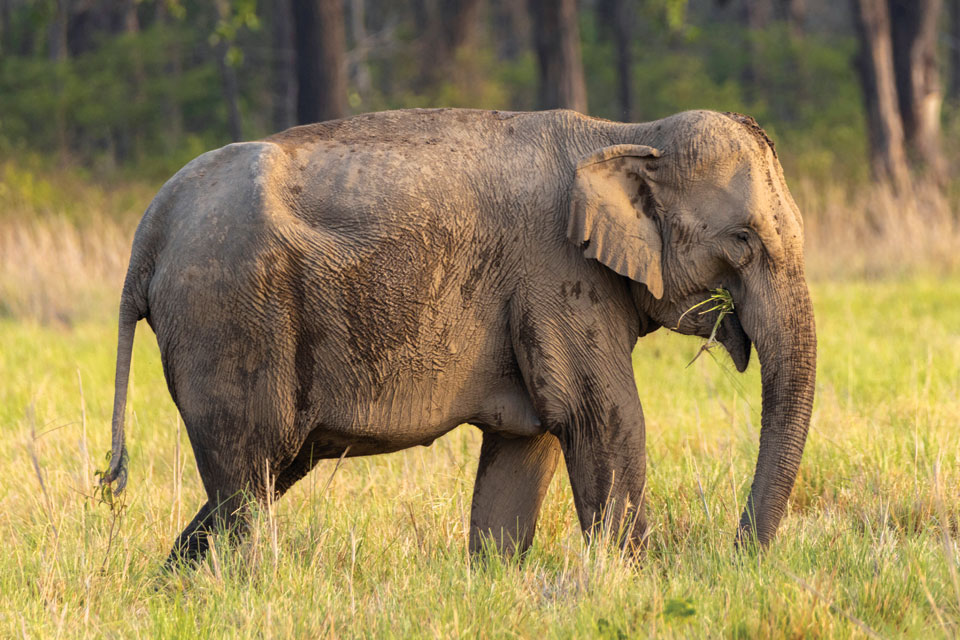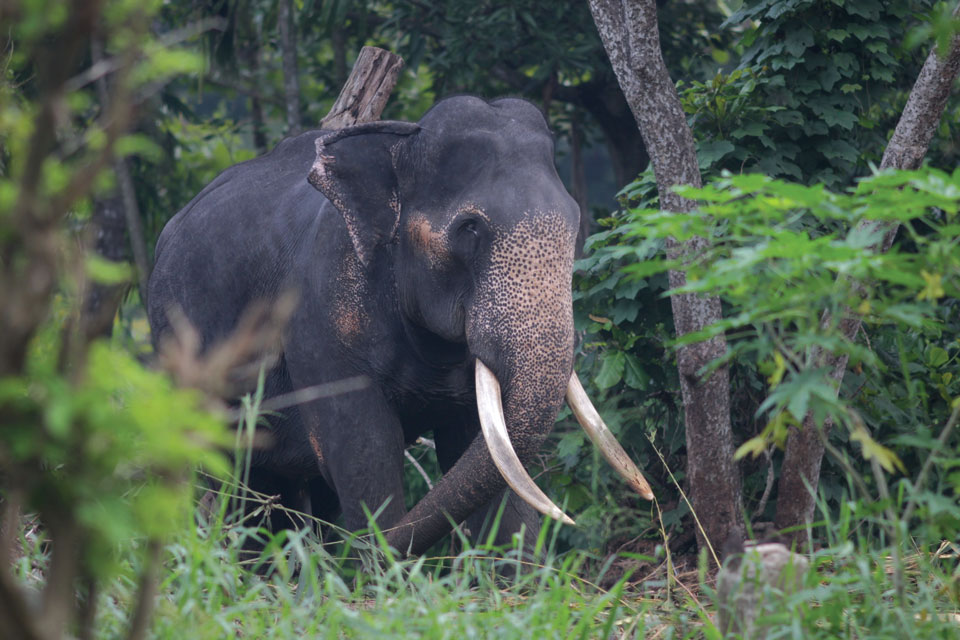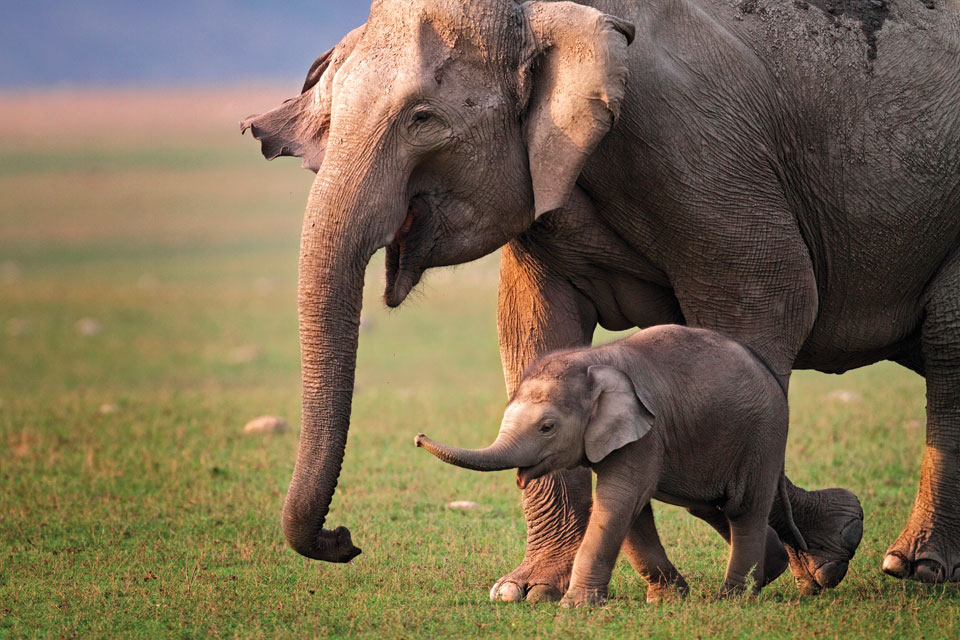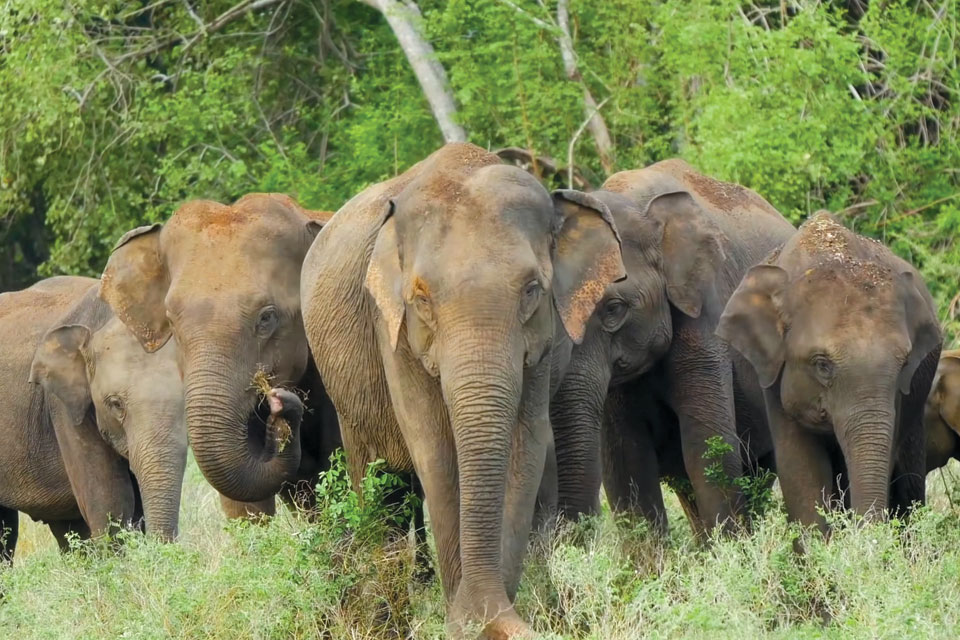
The Indian elephant also known as Asian elephants is listed as endangered and the estimated population is between 20,000 to 25,000 in the wild. This magnificent creature is between six and eleven feet to the shoulder and weighs approximately 5 tons with a length of twenty-one feet. They live for 60 to 70 years and adults reach maturity at about 15 years old.
Asian Elephants are highly intelligent and lead complex social lives. Females live in groups of 6-7 related females, and these are led by the eldest female or the ‘matriarch.’
Indian elephants give birth about every four years and their pregnancies can last around two years. Scientists believe that the long gestation period allows for full brain development of elephants, which are born with complex cognitive skills and are immediately able to sense how to survive in their environment and interact with the herd.
Only male elephants have tusks and although illegal they are still hunted for their ivory which makes the female population greater than the male.



The Indian Elephant is one of the recognized sub-species of the Asian Elephant. Asian Elephants differ in many ways from their African relatives – they are smaller in size with smaller ears, and the back of the Indian elephant is more rounded making the crown of the head the highest point of the body. The African species has a two-fingered tip to its trunk where the Indian Elephant has only one ‘finger’; while the tusks of the male Indian Elephant are more curved and thicker than those of the African.
These huge animals can spend up to 19 hours a day feeding and will eat huge amounts of plant matter per day. By clearing large areas of vegetation, they create space for new growth. They forage for grasses, bamboo, legumes, bark, succulent climbers and palms.
Elephants defecate between 16 and 18 times a day and can produce up to 220 pounds of dung in a day over an area of 125 square miles. This actually provides an important service, by helping to disperse seeds and nutrients. They stay close to water as they need to drink at least once a day, and when they live close to cultivated areas, they will feed on crops such as banana, sugarcane and rice.
The need for land by an increasing human population throughout the Indian elephant’s habitat is leaving little room for them. Illegal encroachment into protected areas and forest clearing for roads or other development are all causing habitat loss and fragmentation.
An estimated 40% of Indian elephants and nearly 10% of the total population of wild Asian elephants reside within a 15,500 square mile area in the northeastern states of Assam and Arunachal Pradesh.
With deforestation reducing their habitat by half within a short period of time, elephants have been left with few options but to enter villages and tea plantations bordering forests. This is the push factor. The pull factor is when elephants are drawn to food that’s more appealing than their forest fare.
This has caused a human-elephant conflict which has become more severe. Crops have been destroyed and people killed, which has led to elephants being killed in retaliation. The states of Assam and Arunachal Pradesh witnessed 812 human and 314 elephant fatalities between 2011 and 2021, according to WWF-India. Government figures indicate that, on average, around 500 people and 100 elephants are killed each year in India because of human-elephant conflict.

